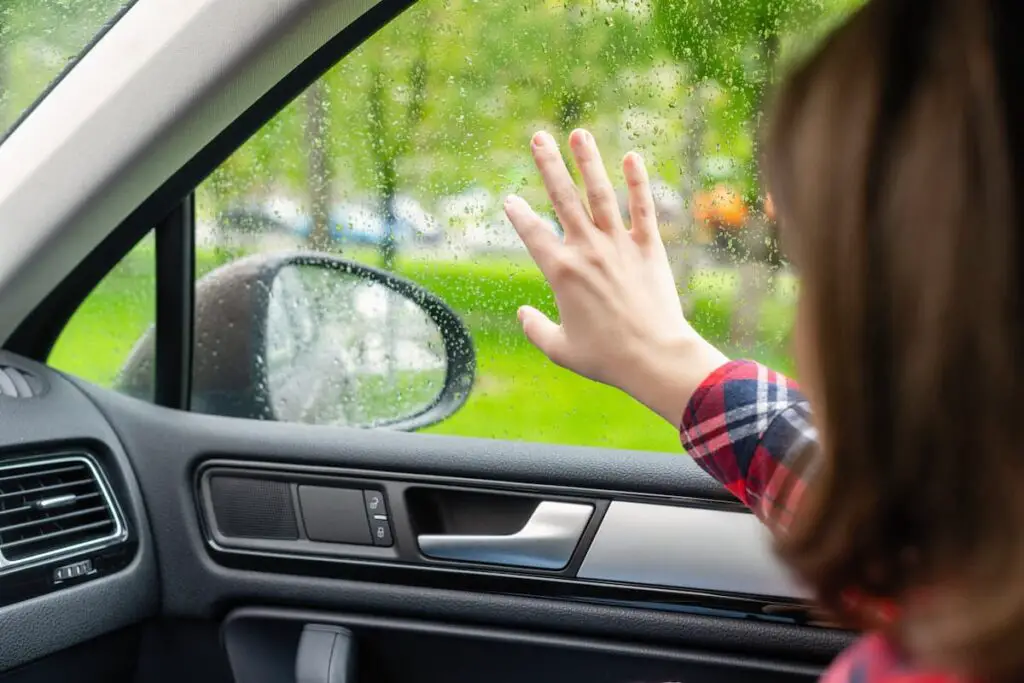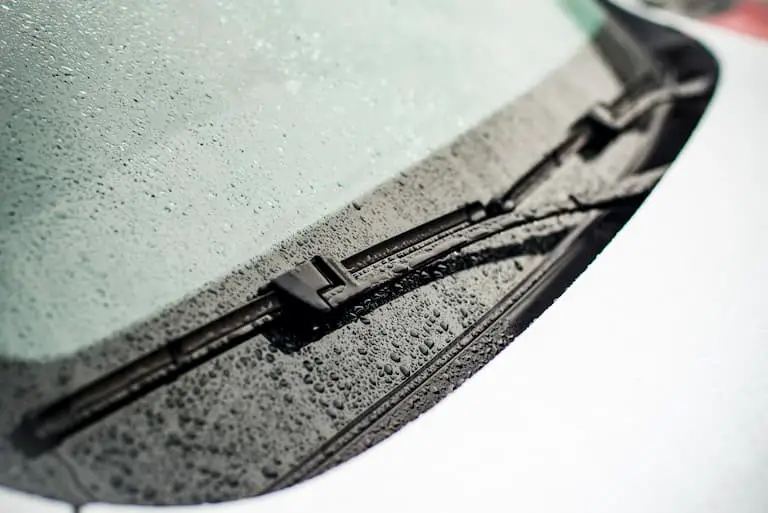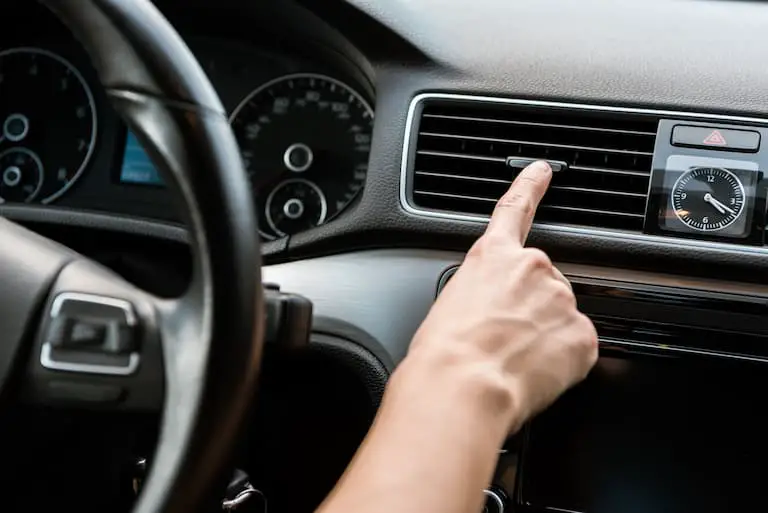As an Amazon Associate, we earn from qualifying purchases. We may also earn commissions if you purchase products from other retailers after clicking on a link from our site.
If you forgot to close your windows before it rains, you wouldn’t be surprised that water got into your vehicle. But what if all the windows were closed and rain got in? How can you stop rain from leaking into your car?
Here’s how to stop rain from leaking through a car window:
- Determine the source of the leak.
- Fix the windshield gasket.
- Fix car and window gaskets.
- Fix sunroof leaks.
- Fix the air conditioner or heater problems.
Trying to locate the source of a water leak is one of the most frustrating things a car owner has to deal with. However, putting a towel down and ignoring the problem will not solve it. This article will guide you through the troubleshooting process.

1. Determine the Source of the Leak
Most leaks come from the outside in, but in some situations, the leak is caused by something in the car. Once the leak is discovered, the next step is eliminating it.
Some problems can be solved quickly, while others require a mechanic or an auto glass specialist. Temporary fixes can keep you dry until you find time to get a permanent repair.
Locating the Source of the Leak
To locate the source, examine the gaskets around the windows and doors and look for spots where the gasket has come loose or brittle. Both window and door gaskets receive more wear from the bending of opening and closing them.
Leaks in window seals are often easy to spot. If you’re not sure, have someone climb into the car. Use the same soap and water technique and have the person in the car look for leaks.
If the car leaks only when sloped, the door seal is probably the culprit.
If the source of the water leak is not readily apparent, make a soapy water mixture, and pour it slowly along the edge of the windshield. Be sure to start at the bottom. Add more soap if the soapy water mixture is flowing too fast for you to notice a leak.
Blow air from a can of compressed air (or an air compressor if you have one) around the border of the wet windshield. If the water bubbles up, you have probably found a leak.
Windshield Leaks
Windshield leaks are among the most frequent sources of water leaks. In the past, windshields were sealed with rubber. However, rubber deteriorates quickly, which is an issue. So manufacturers turned to butyl tape.
Therefore, older cars are prone to leaky windshields. Sometimes manufacturing defects are to blame. And a common cause of windshield leaks is a shoddy windshield replacement.
In addition, frozen water can also cause windshield seals. Since water expands when it freezes, water that seeps behind the gaskets will freeze and potentially cause a leak.
2. Fix the Windshield Gasket
After finding the leak, use a windshield sealant and apply it to the leak. The sealant must get underneath the seal.

Permatex Windshield & Glass Sealant (available on Amazon) forms a clear seal. The product is thin enough that it flows under the gasket for a better seal.
Even though the product claims to be resistant to extreme temperatures, there is no guarantee a leak won’t appear next to the area you sealed. So keep an eye on it during the winter months. Additionally, if multiple leaks show up, you should consider taking it to a car glass repair shop.
Tip: The process should take a minimum of an hour. Expect a sloppy job if the technician says they can do it faster.
3. Fix Car and Window Gaskets
When the rubber surrounding the window becomes loose or brittle due to aging or physical damage, it will no longer properly seal. You might be able to see the source of the leak, but if the seal is no longer glued to the door frame, you will need to check for that.
If the seal itself is not the source of the leak, it could be due to damage to the door frame. A fender-bender might cause some minor cosmetic damage, but the impact may have damaged your vehicle’s frame without your knowledge. A small gap between the frame and door might be too small to be visible but large enough to let the rain come into the cabin.
Car and Window Gasket repairs are straightforward, and most people can do them without taking the car to a specialist.
- Window Seals: Unless the rubber is brittle, use an adhesive and glue it down. The 3M Black Super Weatherstrip Adhesive (available on Amazon) creates a flexible bond that resists vibration. The product is messy, so you’ll need some gloves. Also, follow directions carefully so that you don’t glue it down too soon.
- Door Seals: Replacing door seals is also straightforward—remove the old seal, use rubbing alcohol to clean the old adhesive, and apply the new seal.
Tip: Make sure that the seal you buy is compatible with your car.
4. Fix Sunroof Leaks
Sunroof drains are frequently overlooked as the source, especially if the seal shows no signs of damage. Sunroofs have built-in drains to carry water out if any gets past the rubber seal.
This drainage system consists of a small filter attached to tubing. The tubing runs from the base of the sunroof to the bottom of the car, usually in the pillar between the front and rear doors. Some drains go to the vehicle’s base, while others let the water out at the front door frame.
If the filter gets clogged with leaves or dirt or dirt gets into the tubing, water that leaks under the seal finds other ways to drain out.
A sunroof leak is easy to spot—water dripping from the seals is the most common sign. Fixing the leaks involves examining the rubber seal and sunroof drains.
- Rubber seal: Dirt and crud can keep the sunroof from closing correctly. Even if the seal is clean, go ahead and clean it.
- Drains: Clean out all drains, whether they are clogged or not. Then locate where the attached lines drain out. Pour water in each line, checking that the water exits. If the water line is clogged further down, you need to use an air compressor to dislodge it.
5. Fix the Air Conditioner or Heater Problems
Fixing these requires more experience with troubleshooting and replacing parts on a vehicle. An air conditioner line problem requires locating the line. Often these lines are accessed from underneath a car.
Rubber seal replacement is not as complicated as it sounds, but if your evaporator or heater core is broken, you need to replace it.

Clogged Air Conditioner Drain
Air conditioning leaks can be very problematic. There might be several problems, and not all are easy to fix.
- Faulty air conditioner seals: When these seals go bad, they can cause evaporated water to leak out of your air conditioner and onto the floor.
- Clogged water evaporator: Drains that evaporate water from your car can also become blocked. This is a serious problem because a clog causes water to build up in your air conditioner. That water will eventually leak out of the air conditioner. In addition, it can damage the electrical systems in the a/c as it travels down to the carpet.
- Evaporator core: There’s also a chance the leaking is coming from the evaporator core. If dirt and leaves get in the a/c unit and reach the evaporator core, the unit will eventually leak.
Leaking Heater Core
A leak from the heater core is another possible cause of a wet carpet in the front of the car. This leak will occur even though it hasn’t rained because the coolant in the car’s heater is leaking out of the core.
Bottom Line
As long as the rain stays on the outside, life is good. However, once the water starts leaking into the car, you need to locate where it is coming in and fix the problem. If you don’t, it will only get worse. So please don’t wait for the leak to repair itself.
